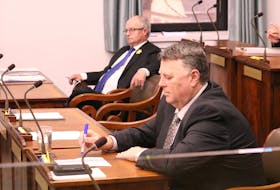There’s shining potential in a new program just announced by Nova Scotia’s Energy Department. Just at the testing stage, the plan will see 18 applicants that include institutions, municipalities and communities installing solar panels to generate power for the electrical grid.
It’s a source certainly worth exploring, and generally underused in the province, where currently only one per cent of electrical energy comes from solar.
It’s also a worthy project when you consider the critiques that often accompany solar and wind-energy ventures – for example, that generation can vary day to day depending on conditions of the weather. All relatively speaking, that is, the sun’s power is still a constant.
But, again, technology in these methods continues to improve and a program testing the potential in a province is vital to any progress toward decreasing our dependence on energy driven by fossil fuel consumption.
The program, announced as part of the government's electricity plan in 2015, will see universities, municipalities, non-profits, charities, and Mi'kmaq communities selling power to local grids. Prices will reflect the cost of installing the 330-watt panels – which, naturally, is a concern to customers of Nova Scotia Power. But the impact on ratepayers is capped at 0.1 per cent.
The Atlantic School of Theology in Halifax has signed a 20-year deal to sell solar power generated by 150 panels. It’s expected to yield a return to the school of about $10,000 annually.
The pilot in this province follows similar ventures elsewhere. People travelling in rural areas of Ontario in recent years might, for example, have noticed walls of solar panels here and there in farming areas, part of that province’s micro-fit program. Alberta has also begun a solar program.
Peter Craig, an official with the Energy Department, described the two-year pilot as a means of building up the industry, getting people, communities and organizations interested, and making this source a piece of the energy grid.
A typical installation spot might be, for example, on the roof of a public building.
With public structures throughout our communities and spaces here and there unlikely to be called into any other use, the potential for increased installations is good if this project yields promising results.
This kind of approach also teaches a lot about ownership – in the sense that governments and individuals alike, leaders in industry and with institutions discuss the need for sustainability and cleaner energy sources. We all draw on an energy supply, and helping contribute to the supply through such a project is a good illustration – of both a vital need and, through collective action, ways the system can be improved.
We’ve seen improvements to this technology over the years, and can expect to see continuing improvement. This project is one way of investigating possibilities in the future since the source of this energy is, indeed, vast.








